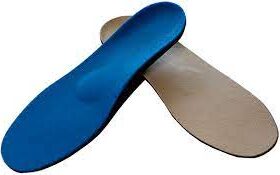- Your cart is empty
- Continue Shopping

Product
Product Description
Protective Helmets for Head Safety in Children and Adults with Neurological Conditions: Detailed Explanation
Protective helmets play a crucial role in safeguarding the head and face of individuals, particularly children and adults who are afflicted with neurological disorders or conditions that make them more susceptible to injuries. These helmets are designed with precision and durability to provide optimal protection against impacts and shocks, while also accommodating the unique needs of patients and ensuring thorough monitoring and case management. In this detailed explanation, we will delve into the key aspects of designing and utilizing protective helmets for individuals with neurological conditions, focusing on both head and facial protection.
1. Purpose and Importance of Protective Helmets:
Protective helmets serve as a vital tool in preventing head injuries and minimizing the risks associated with falls, collisions, and other accidents that individuals with neurological conditions might encounter. These helmets are engineered to absorb and distribute impact forces, reducing the likelihood of severe head trauma. Moreover, for patients with neurological issues, wearing such helmets can help prevent secondary injuries that may exacerbate their existing conditions.
2. Helmet Customization and Face Protection:
Adequate protection requires careful consideration of individual needs and the nature of the neurological condition. Helmets are not one-size-fits-all; they should be customized to provide a snug and comfortable fit. The helmet’s design should take into account the specific neurological concerns and potential mobility limitations of the patient.
To ensure comprehensive protection, some helmets come with face shields or visors. These transparent shields are made from impact-resistant materials, safeguarding the face from potential hazards while allowing for unobstructed vision. The shields can be designed to pivot or lock into place, depending on the patient’s requirements.
3. Craftsmanship and Durability:
Crafting protective helmets for neurological patients demands a meticulous approach to ensure both functionality and durability. Helmets should be constructed from high-quality materials that are capable of withstanding repeated impacts. Advanced manufacturing techniques, such as injection molding or layered composite construction, can be employed to create helmets that are lightweight yet robust.
4. Monitoring and Case Management:
The effectiveness of protective helmets lies not only in their design but also in the ongoing monitoring and case management of patients. Healthcare professionals play a critical role in assessing the fit and condition of the helmet, as well as tracking any changes in the patient’s neurological status. Regular follow-up appointments allow for adjustments to be made to the helmet’s fit or design, ensuring continued protection and comfort.
5. Comprehensive Care for Various Conditions:
Protective helmets can be tailored to suit different neurological conditions, such as epilepsy, cerebral palsy, or motor neuron diseases. Each condition presents unique challenges and requirements, necessitating a personalized approach to helmet design and utilization. Healthcare providers work closely with patients, caregivers, and interdisciplinary teams to develop helmets that cater to specific needs.
Conclusion:
In summary, protective helmets designed for head safety in children and adults with neurological conditions serve as a critical intervention to mitigate the risks of head injuries and secondary complications. These helmets are meticulously crafted to provide a precise fit, durable construction, and face protection. Regular monitoring and case management ensure that the helmets continue to fulfill their intended purpose, offering optimal protection and promoting the overall well-being of patients with neurological challenges.




